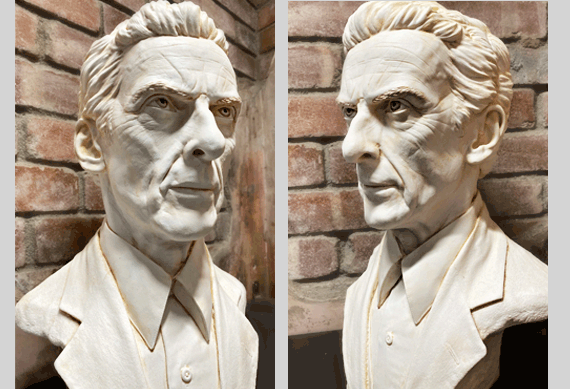


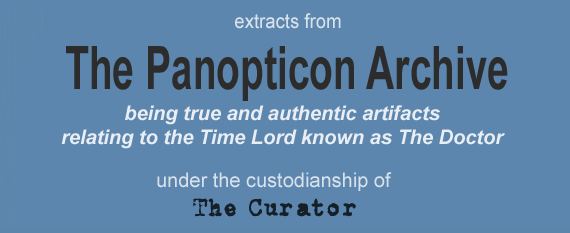


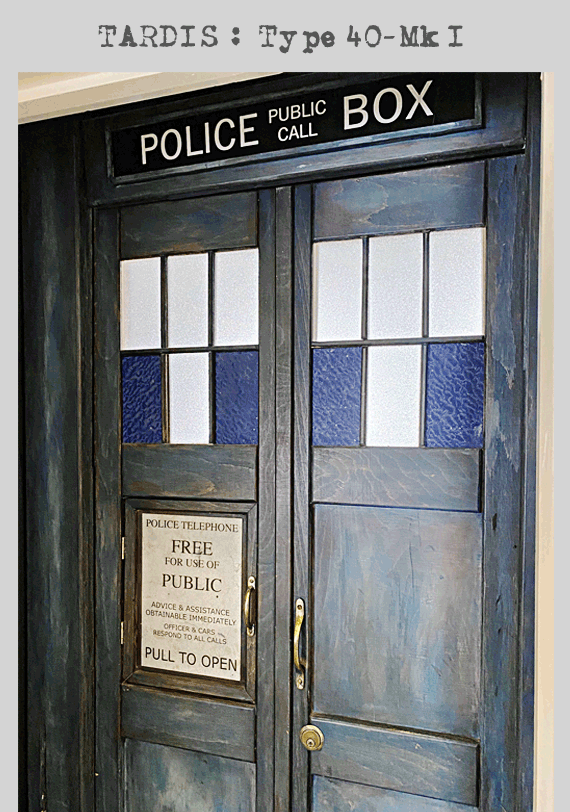

The Doctor's TARDIS was an early Type 40 Mk 1 TT Capsule which he stole from his
home planet Gallifrey. It enabled him to travel through Time and Space.
As was typical with the early Type 40 models, the Doctor's TARDIS was prone to a
number of irritating and recurring technical faults, the most notable of which
was the failure of the Chameleon Circuit to alter its outward appearance when
materialising in order to help it blend in with its surroundings.
In conjunction with the Perception Filter this would enable a TARDIS
to remain relatively undetectable.
Unfortunately the failure of the Chameleon Circuit meant that the Doctor's
TARDIS was 'stuck' in the shape of a 1950's Police Telephone Box, which significantly
reduced its ability to remain covert and it relied entirely on its Perception
Filter to remain inconspicuous.
Although, over time, the Chameleon Circuit made several attempts to correct itself,
these only resulted in relatively minor adaptations in the shape and appearance of the TARDIS, not in its form.








The K7 Fluid Link is a TARDIS component located in the base of the Central Console.
It serves as an interface to 'fuse' Artron Energy, (radiation particles residing
in the Time Vortex), with the TARDIS Dematerialisation Circuit.
Fluid Links are sensitive components and have a tendency to overload.
Early model Time Capsules, (including the Doctor's Type 40 Capsule), suffered from
frequent failure of the fluid links which, in extreme cases, could cause the release
of vaporised Mercury into the control room. This problem was rectified with the
Type 60 and later models.
On his first visit to Skaro the Doctor told his companions that the K7 Fluid Link in the TARDIS
had run out of Mercury, and that it
needed replenishing in order for them to dematerialise and leave the planet. It was a ruse, providing
him with an opportunity to explore the city of the Daleks.

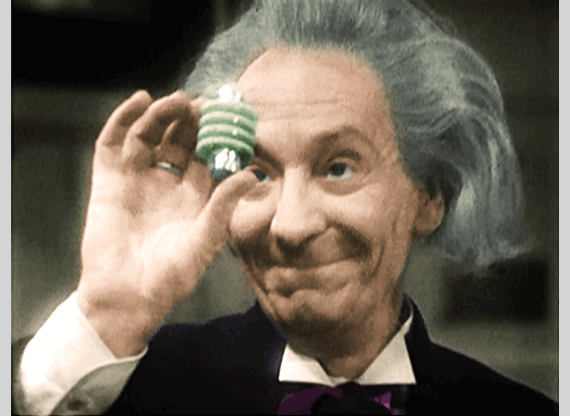




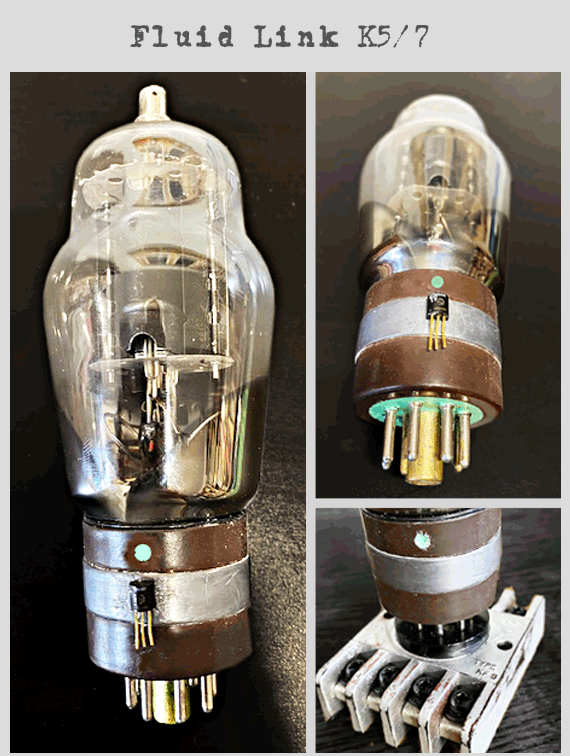

The K5/7 Fluid Link is a component of the KeySwitch Relay: Type KF8 that, amongst other things, controls the Jelly Baby Dispenser and Pear Inhibitor.
The 13th Doctor, recalling his earlier expolit on Skaro, deceptively told Nardole that it was the K5/7 Fluid
Link, (rather than the K7), that interfaced with the Dematerialisation Circuit, influencing him to remove
it, believing it would prevent the Doctor from leaving the University and his
obligation to guard Missy.
Doctor: I thought I sent you to Birmingham for a packet of crisps.
Nardole: Yes, well I saw through your cunning ruse... Do you know what this is?
Doctor: If it's not crisps you're sacked.
Nardole: Fluid Link K5/7. I removed it from the TARDIS the other night after your lecture.
Doctor: That's very untrusting of you.
Bill: What's a Fluid Link?
Nardole: No idea, but the TARDIS can't go anywhere without it.
Doctor: Who told you that?
Nardole: You did.
Doctor: Exactly... that'll teach you to trust me... I'm docking your pay for this.








The Harmonic Resonator is part of the TARDIS Low-Tech re-boot system located in the Central Core. Designed to enable the Organic Sentience within the TARDIS to continue to function in the event of a failure in the High-Tech components, and to maintain rudimentary operation, life support, and molecular integrity.
The Low-Tech back-up system is designed to be readily adaptable/replaceable, with components that are easy to obtain but which are not susceptible to malicious cyber-attack or a failure of the electronics.
The Harmonic Resonator is a sonic device used to maintain and re-align components, ensuring the workings of the re-boot system can be kept in trim.
The Doctor was inquisitively fascinated by the workings of the re-boot system and would often be observed roaming around with spurious items that grabbed his fancy, using them to postulate hypothetically on the complexity of the space-time continuum, to meditate on the intricacies of inter dimensional space-time travel, and to distract his attention from whatever really needed to be done so he could have a bit of fun.
The Harmonic Resonator, which he refered to as his 'flute', was a particular favourite of the Doctor's during his 2nd incarnation.
He found several versions of it, but it was the 'carnival' adaptation that fascinated him the most, and which seemed to be his particular favourite.








A component of the Low-Tech re-boot system, the Harmonic Disrupter is a sonic device used to dislodge and dissipate intrusive elements that got entangled in the emergency back-up drive.
Appearing in form as a late Victorian Rosewood Piccolo, the Sonic Disrupter was utilised by the 9th Doctor during the Time War to interfere with the organic/cyber interface of the Daleks outer casing causing them to lose co-ordination.
It's effectiveness was only transient. The Daleks were able to quickly isolate and correct the sonic disturbance once they had detected it, but it could provide a few precious moments advantage, and at the very least it was fun to see an irritated Dalek trying to navigate a straight line.








In his 4th incarnation the Doctor used the YoYo both as an aid to focus his thoughts
and for relaxation, but mostly just for the fun of it, his YoYoing skills seemingly
improving with practice until, over time, he became quite proficient.
Leela recognised the YoYo as being part of the technology that operated the TARDIS.
Although the Doctor made light of her observation she was in fact correct.
The YoYo was a Low-Tech backup component of the gyroscope system that maintains the
stability of the TARDIS when in transition.
While on the Moon the 13th Doctor successfully used the YoYo to inspect and detect
irregularities in the local gravity field, and less successfully to attempt
to impress a Viking village into believing he was Odin.








Djhellib, extracted from the Burrteyb Asett Plant, provides high sugar-content glutinous nutrition that can be used as an emergency supplement to the Organic Sentience of the TARDIS in the event of mechanical failure in the High-Tech components of the feeding system. The Low-Tech alternative provides Djhelib in small easily consumable units, known as 'Abees'. They are not intended for humanoid consumption as they have a mildly addictive quality that can cause nausea if eaten in large quantities.
Jelly Babies were the preferred confection of The Doctor. He maintained a ready supply of them,
packaged in a small paper bag, in his coat pocket.
He is first noted carrying them during his 2nd incarnation while waiting for a travel
capsule to arrive, and later when offering one to Brigadier Lethbridge Stewart.
He also famously withdrew a bag of Jelly Babies when rummaging through his pockets
for a firework to fend off a Yeti.
Although he continued to make reference to them throughout his regenerations,
it was the 4th Doctor that favoured Jelly Babies the most, and the one with whom
they are most frequently associated, even though on occasion the bag did seem to contain
Liquorice Allsorts.
In his 7th incarnation The Doctor snacked on a bowl of Jelly Babies immediately prior to the events that led to his regeneration, making them the
last meal he had in that incarnation.
During his 13th incarnation The Doctor discarded the use of the paper bag and instead took
to carrying his Jelly Babies in a cigarette case.








Perception Filters work by reducing the Reality Quotient of an object from
1.0 to 0.9, thus directing attention away from the object or its bearer and rendering
it unnoticed, though not invisible. Martha described the effect as "You know it's there,
but you don't want to know it's there".
Perception Filters are less effective on the highly intelligent, or where the viewer
is aware of the objects existence and is intent on looking for it. Once a person becomes
aware of the object in question they can no longer be influenced by the Perception Filter
and become immune to its effects.
The TARDIS is equipped with its own Perception Filter allowing it to be largely ignored,
despite its size and incongruous appearance.
In an attempt to get close to The Master, the 11th Doctor created portable Perception
Filters by utilising the residual Reality Quotient properties of the TARDIS key, a soldering iron, and a bit of
wibbly wobbly engineering. Unsurprisingly the attempt failed, (not only is The Master
on the intelligent side he's also a Time Lord - really it had failure written all over it from
the start), but Martha was able to use one of the keys to avoid detection by the Troclofanes and
muster help for The Doctor in his hour of need.








Developed by the Time Lord's covert organisation, the Celestial Intervention Agency,
during the years leading up to the Time War. Psychic Paper works by assigning authority,
based on the readers perceptions, to induce them into seeing printed on the paper
whatever is required in order to achieve the desired outcome of the user.
Its efficacy, however, is unreliable and is likely to fail to work on the highly intelligent, those who are illiterate or have feeble imaginations,
and anyone with basic psychic training. It would also fail if the users demands were too unbelievable.
Although it was used occasionaly by The Doctor in his 8th and 9th incarnations,
he utilised it more extensively in his later regenerations for obtaining the confidence
and trust of strangers, and gaining entrance to places he really shouldn't have been in.








The Doctor used his 3D glasses in order to detect the particle-like entities,
(void stuff), that latched on to people or objects that had travelled through the Void.
He was thus able to identify The Sphere, (obtained by Torchwood One),
to be a Void Ship, a craft that could be used to travel through the nothingness between parallel universes.






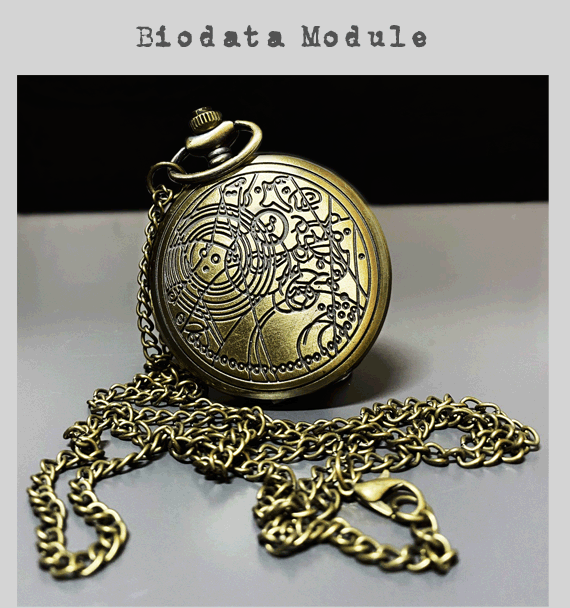

Biodata modules store the organic essence of an individual, prior to them using a
Chameleon Arch to modify their biological make-up, enabling them to restore their original biological
identity and associated memories.
The 11th Doctor used a Biodata Module in his attempt to escape
from the Family of Blood, turning himself into the human
John Smith.
As was typical of its type, the Biodata Module was disguised as a fob watch, inscribed with
Gallifreyan symbols, and fitted with a perception filter to deflect attention.
Martha Jones later recognised the distinctive markings on a similar watch in the
possession of Professor Yana and realised that this too was a Biodata Module.
When the Professor activated the module by opening the fob watch his memories and biological
data were restored to him and he realised that he was, in fact, the Time Lord known as The Master.






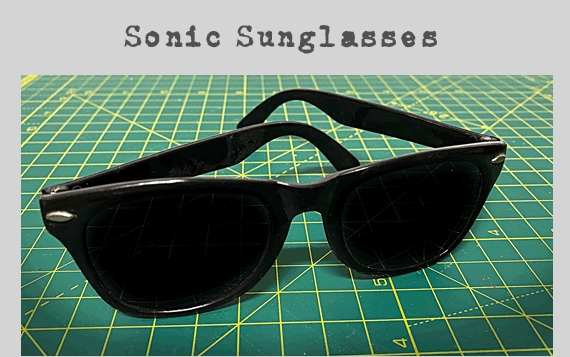

The 13th Doctor wore his Sonic Sunglasses as an alternative to using his Sonic Screwdriver,
after he seemingly became dissatisfied with its functioning and abandoned it.
The sunglasses became his favourite accessory, wearing them when playing his guitar,
worrying about them being scratched after they'd been in the possession of Davros,
and repairing them after they were snapped in half by an unimpressed Viking.
Even after obtaining his new Sonic Screwdriver he continued to wear the Sunglasses, albeit more intermittently. He also used them to conceal from
Bill that he had been blinded after being exposed to the vacuum of space.
When meeting his first incarnation in a Time Slip Paradox his former self was
unimpressed by their appearance and confused by their purpose, being unable to understand
why anyone would wear Sunglasses indoors. To which the 13th responded "because I love it! Never take those off"








Mr Huffle was a squishy toy used by Lucy Fletcher when interrogating the 13th Doctor.
According to Lucy, Mr Huffle felt "pain". When squeezed it would flatten out and
squeak as it was inflating, mimicking the sound of a high-pitched scream.
Lucy gave Mr Huffle to The Doctor before he left and he took it with him,
keeping it in the TARDIS control room.








The Time Matrix is the storehouse of all Time Lord knowledge, a supercomputer, overseen
by the Keeper Of The Matrix, that projects a micro-universe reality simulation, allowing physical
access to its databanks by Time Lords resiliant enough to survive within its largely hostile environment.
Time Lords are connected to the Time Matrix on a psychic level, and their experiences,
awareness, consciousness and personality characteristics are continuously uploaded to the central database.
The interface between the psychic update and the Time Matrix manifests itself in a physical
three dimensional representation, (known as an Eaglemoss Conduit), connecting at its hexagonal base directly
into the Matrix Repository and providing a link into the Matrix Database.
Eaglemoss Conduits are also manifested from a Time Lords uploaded memories, resulting in representations
of species that then become part of the Time Matrix in their own right.








Commissioned by the Shadow Proclamation as part of their collection of sculpts
recognising the species and principle races of the universe, and
created by the craftsmen of Titan-Merch in the Forbidden Regions Galaxy.
The choice of The Doctor by the Shadow Architect to represent the Gallifreyan
Time Lords was highly controversial, and only 5 sculpts were approved by the Vetting Committee,
(the 3rd and 12th incarnations were also ratified). Four prototype sculpts of the 1st, 5th, 6th
and 8th Doctors were rejected, after which the project failed and no further sculpts were commissioned.

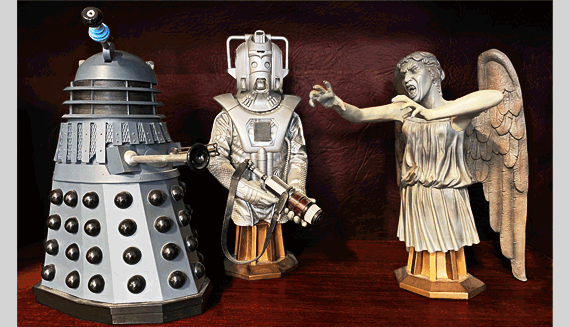






Crafted by Richter The Artisan when The Doctor returned to The Gamma Forests
in memorium Lorna Bucket, who had given her life during the Battle of Demons Run.
'The Mighty Warrior' sculpture is rendered life-size, measuring 1.5 Terra Feet in height.

